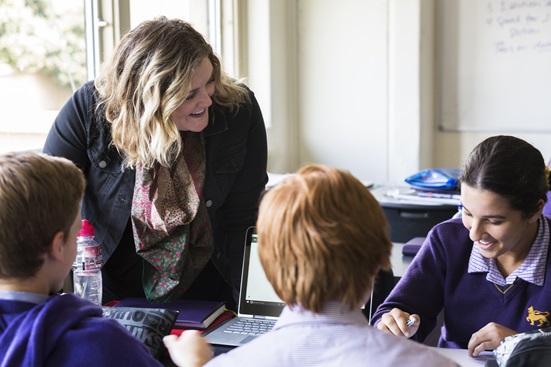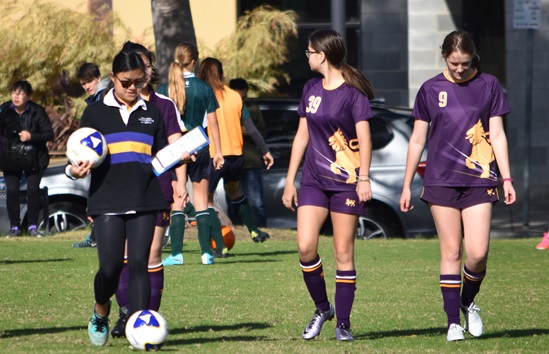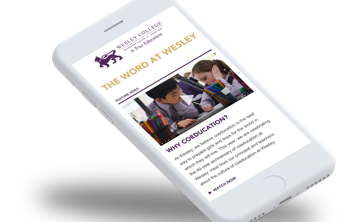
Oliver Thompson investigates the purposes of formative and summative assessment to explain the fundamental purpose of assessment for learning.
When we think of assessment, we often have testing in mind, and an image of students at desks in rows, completing answers to questions in a pen-and-paper format. It’s true that we often do this kind of testing in schools. We do it for the purpose of measuring what students know and can do, or how much they know and how well they can do, usually at the completion of a study unit or course. We do it especially for the purpose of certification, and often for the purpose of selection - to a more advanced study unit or course, say, or to a university course. We educators call this summative assessment, but it’s not the only form of assessment, and certification and selection for advancement are not the only purposes of assessment.
Learning progress, or finding the way that will work
While this kind of assessment is important, if we switch our thinking from the noun to the verb, the meaning of assessing or testing becomes a bit different. When Thomas Edison in 1875 set up Menlo Park, his ‘inventions factory’ in New Jersey, his purpose was to test or assess his technological innovations. As Nathan Furr notes in ‘How failure taught Edison to repeatedly innovate,’ I have not failed 10,000 times. I have not failed once. I have succeeded in proving that those 10,000 ways will not work. When I have eliminated the ways that will not work, I will find the way that will work.’ What’s interesting about Edison’s verb-focussed approach to assessing or testing is that his purpose wasn’t simply to measure his innovations, but to collect information that would enable him to improve, or discard, them: to ‘find the way that will work’ and figure out what would work better.
These days we call this feedback: collecting information about our students’ learning so that we as teachers, and they as students, can understand in detail what works, and doesn’t, and what we need to do in our teaching to support them in their learning. We educators call this formative assessment: assessing or testing so that we, and our students, have the best possible picture of their progress in learning: whether they have the required knowledge to solve a problem in a particular situation, and whether they can adapt this knowledge to new or unfamiliar problems; the skills and processes they can apply; and the conceptual understandings and attitudes that underpin their knowledge and skills. Equally, formative assessment helps us and our students to understand where there is a knowledge or skill gap, or a flaw in their acquired knowledge or skill, or a misconception.
Formative assessment and feedback
Consider a soccer coach standing on the sidelines of the Back Turf, for example, studying her attacking players as they approach the net through a set of cones representing defenders, and the way each strikes the ball as she takes a shot at goal. A summative assessment might measure how many players put the ball in the back of the net. In a formative assessment, however, the coach is doing much more: collecting information about each player’s speed and balance, her agility and ball control, her accuracy, power and speed of shot, and then use this to provide feedback, and appropriate drills to support each player’s skill progression.

A Year 3 teacher might be observing how students understand the mathematical meaning of the equals sign (=) to see whether they understand that the expressions on either side have the same value, or are equivalent, rather than simply that an equals sign indicates where to write an answer. A summative assessment might measure how many work samples a student answers correctly. In a formative assessment, the teacher might focus on correct and incorrect answers to see whether students understand equivalence. Given the problem of finding the missing number in the open number sentence 3 + 4 = ? + 5 Ben, she finds, responds: 3 + 4 = 7 + 5. To Ben, the equals sign means, ‘Write an answer to the expression on the left side.’ The teacher can then use her understanding of Ben’s misconception to provide feedback and appropriate strategies. These might include, for example, putting three red and four yellow balls in one box and five yellow balls in a second box, and asking Ben how many red balls need to be added to the second box so both boxes have an equal total number of red and yellow balls. She might then ask Ben to represent this in numbers, asking, ‘In the same way that we decided on the balls needed to make the two boxes equivalent, what number would you put in the place of the question mark to make the two sides equal? Remember that both sides must equal 7 because 3 + 4 = 7.’
Balancing formative and summative assessment
In schools, the constant challenge is to balance our assessment of students for formative and summative purposes. End-of-semester or end-of-year summative assessments for grading or credentialing purposes are necessary. These assessments might cause our students stress and anxiety, but they might also really stimulate their learning, much as a major soccer tournament might stimulate a gold-medal performance by the girls in our well-coached soccer team in the example above. What we have to remember, however, is that we also need to be able to inform our students about their learning progress, and ourselves about the effectiveness of our teaching, and a letter or number grade doesn’t do this.
Across Wesley College’s Junior, Middle and Senior Schools, we are constantly investigating ways to provide meaningful and rich feedback to our students through formative assessments that enable our teachers, or coaches, and students to review what went right or wrong, or in Edison’s terms, ways will or won’t work. We are also using our formative assessments to take the learning through to the next task. There is a clear cycle to assessment when we consider work in this way: assessment is actually part of our students’ learning progress since it helps them, and us, understand what went right or what works, as well as what went wrong or what doesn’t work, and what to do to address that.
Formative assessment helps ready students for summative assessment
Everyone’s learning pathway involves lots of little steps, each of which is an opportunity for feedback, to figure out what went well or not so well and what the next steps should be, so when the student comes to a summative assessment they are able to operate at their best. The point is that formative and summative assessment are not the same, but neither are they exclusive: formative assessment is essential in providing feedback that enables students’ learning so that they are ready to undertake the summative assessments that are necessary at the completion of a study unit or course, for the purpose of credentialing or certification. Both are equally important.
As a school proudly delivering the International Baccalaureate Primary Years Programme, Middle Years Programme and Diploma Programme, and Victorian Certificate of Education, our responsibility is to ensure we provide every student with opportunities for formative and summative assessment. The more useful our formative assessments are to us and our students, the less likely our students will feel stressed or anxious about summative assessments.
Assessment for learning
Like Thomas Edison, the goal is that we and our students actively pursue feedback so that we and they can improve, identifying the 10,000 ways that will not work so that we can succeed in learning the ways that will work. In pursuing that goal, we want our students to feel safe, that it’s okay to prove what will not work because this is part of learning progress as much as is proving what will work. This approach to assessment ensures that, within each and every classroom at Wesley College, there is an understanding that assessment is not just of learning, it’s for learning.
